Sigma 50mm F1.4 Art: In the Lab
I paired the 50mm F1.4 DG DN Art with the 60MP Sony a7R IV for resolution tests. Imatest analysis of an SFRPlus test chart shows it to be a fantastic performer, only slightly behind the Sony FE 50mm F1.2 GM in sharpness. The Sigma delivers excellent marks (4,600 lines) at its maximum aperture. The field of focus is uniformly flat, so you can get clear results, even for off-center compositions.
Sony a7R V, f/1.4, 1/3,200-second, ISO 100 (Credit: Jim FIsher)
Resolution ticks up at smaller f-stops, with the crispest results coming in the f/2.8-5.6 range (5,500 lines). This is as good as you can expect from the a7R IV, or any full-frame camera for that matter.
Chromatic aberration is well-controlled. I couldn’t spot any false purple color around power lines or branches, nor is there evident purple or green color in defocused backgrounds. The optics do show some pincushion distortion and a vignette, but Sigma includes a correction profile for Raw editors to remove it, and in-camera corrections take care of it for JPGs.
Sony a7R V, f/1.4, 1/1,600-second, ISO 100 (Credit: Jim Fisher)
There are some optical drawbacks, however. I noticed some coma effects in photos with bright specular highlights. Coma is typically a concern with astrophotography, where stars are rendered with oblong, false color halos. I spotted it in several photos made on earth; magenta coma popped up around the water droplets left over from a previous night’s rain on a hand-painted sign I use as a regular test scene, and I was able to see it in the reflection of a flash in a dog’s eye in a portrait. It’s lessened at f/2 and gone by f/2.8, and is one of those aspects of lens performance that doesn’t affect every image.
Sony a7R IV, f/1.4, 1/60-second, ISO 1000 (Credit: Jim Fisher)
You’ll want to use the lens at wider apertures for portraits and other blurred-background photos. Defocused backgrounds are pleasingly soft, and I couldn’t spot any evidence of onion skin or distracting hard-edge highlights. You’ll see some cat’s eye shapes toward the edges of the frame when using the lens at f/1.4—this is common in lenses with aspherical elements. Setting the aperture to f/2 or smaller turns the cat’s eyes into circles, as light is shaped by the 11-blade circular aperture.
Sony a7R IV, f/5.6, 1/60-second, ISO 500 (Credit: Jim Fisher)
Flare isn’t as well-controlled as with the premium options, and it’s more likely to be a concern for creators than coma. If you’re working against a strong backlight you can expect to contend with some ghosts and flare at wider f-stops. For shots into the sun you can set the lens to f/5.6-8 to sidestep flare, and if you go down to f/16 you’ll get scenes with 22-point sunstars.
Обзор Sigma 50mm f/1.4 DG HSM Art
Это вторая версия объектива Sigmas, заменившая более старый объектив 50mm f/1.4 DG EX. Серия Art была разработана, чтобы обеспечить более быстрое и резкое решение, чем его предшественник, с лучшим качеством сборки и обработки. Объектив Sigma 50mm f/1.4 DG HSM Art получил премию EISA в категории “Лучший продукт” в 2015 году, и спустя 5 лет он по-прежнему занимает свое место среди лучших объективов на рынке.
Когда вы берете в руки этот объектив, вы сразу понимаете, что это не просто дешевая бюджетная альтернатива от сторонних производителей. Он большой, тяжелый (для 50-мм объектива) и кажется солидным. С точки зрения фотографа, он может легко рассматриваться как конкурент объективам класса люкс серии L от Canons, ED от Nikons и GM-range от Sonys, если оценивать его только по внешнему виду.
В коробке вы сразу увидите, что объектив поставляется с блендой и защитным футляром с петлей для ремня. Для сравнения, аналогичный объектив Canon не комплектуется ни тем, ни другим.
Этот объектив не предназначен для бюджетного варианта; на самом деле он разработан как шаг вперед. Sigma позиционирует этот объектив как топовый вариант для тех, кто хочет получить лучшее.
В данном обзоре мы будем тестировать версию этого объектива с креплением Canon EF-mount на полнокадровом корпусе Canon 5D Mark IV.
Для кого предназначен Sigma 50mm f/1.4 DG HSM Art?
Объектив предназначен для работающих профессионалов или продвинутых энтузиастов, которые хотят иметь быстрый прайм объектив и готовы платить за качество ценой удобства (это большой и тяжелый объектив для 50 мм). Именно поэтому он идеально подходит для портретных, событийных и свадебных фотографов, которым нужно универсальное фокусное расстояние с хорошей работой при слабом освещении и малой глубиной резкости.
При весе в 815 г и длине 99,9 мм обычный любитель может счесть этот объектив слишком большим для ношения с собой. Для сравнения, Canon 50mm f/1.4 USM весит всего 290 г. Вот почему этот объектив может оказаться не самым идеальным выбором для фотографа-путешественника.
Sigma 50mm F1.4 DG DN Art: Autofocus
Turning our attention to autofocus, the lens acquits itself well. It’s not the fastest in the world – 50mm f/1.4s never are – but it should be quick enough to handle most of the purposes for which it’s likely to be used. It’s also very quiet. I saw no clear evidence of misfocusing among the hundreds of sample images I shot for this review, however depth-of-field is extremely narrow at the largest apertures, so you do have to be extremely careful about where you place the focus point.

Here I focused manually on the tree’s trunk, to avoid the autofocus getting confused by foreground branches. Sony Alpha A7R IV, 1/1000sec at f/1.4, ISO 100. Image credit: Andy Westlake
Click on any sample image to see a full-resolution version
Likewise, manual focus works well when you need it. The focus ring offers just the right level of resistance to enable accurate control, while a scale in the viewfinder shows the current focus distance. Videographers should be aware, though, that the lens exhibits visible focus breathing, with the angle of view narrowing at closer distances. This is one area where Sony’s FE 50mm F1.4 GM has an advantage, as it’s compatible with the breathing compensation function on recent Sony cameras. Samyang’s AF 50mm F1.4 FE II also has minimal breathing.
Sigma 50mm F1.4 DG DN Art Lens Autofocus:
I’m also happy to report that the autofocus is top notch. The 50mm f1.4 DG DN Art features the new HLA autofocus driver (High-response Linear Actuator) that was introduced in the 60-600mm DG DN OS Sports (lens review here), which not only offers quick autofocus but is also essentially silent in operation. It’s also very accurate, and keep in mind that I was testing an early production lens as well, so it has beta firmware.
I am not an action photographer but I did get the lens around Chinese New Year, so I was able to try it during one lion dance performance. The autofocus is impressive. It is very efficient, and locks on to the subject quite quickly even at f1.4.
I was also able to do a model shoot one day, and again, this lens’ autofocus is so quick. I was locking on so fast, and snapping that I actually had to remember to give the model some time to change facial expressions. Normally, I don’t shoot that fast but I was testing this lens, and just wanted to see what it can do. If you shoot a lot of people or portraits in general, the 50mm f1.4 can definitely keep up. Keep in mind that all the photos I was shooting were taken at f1.4 as well. I wanted to test the wide aperture setting with a person.
Distortion
We penalize lenses for distortion when they bend or warp images, causing normally straight lines to curve.
There are two primary types of distortion: When the center of the frame seems to bulge outward toward you, that’s barrel distortion. It’s typically a result of the challenges inherent in designing wide-angle lenses. When the center of the image looks like it’s being sucked in, that’s pincushion distortion. Pincushion is more common in telephoto lenses. A third, less common variety (mustache distortion) produces wavy lines.
The Sigma 50mm f/1.4 keeps distortion to a bare minimum, though that’s to be expected from a 50mm prime lens. In our test shots, we detected just 0.25% pincushion distortion on the Nikon D810. It’s worth noting that we saw slightly higher distortion with our Canon-mount copy, but it was still under 1%—nothing to be concerned about.
What I Liked and What Could Be Improved With This Lens
My shooting style is to shoot fast and capture a lot of movement. I often shoot on burst and capture movements like running a hand through the hair or walking in order to get more natural-looking shots. That also makes it harder to catch focus every time. Compared to my Sony 50mm f/1.2 lens, this had a slightly higher number of shots with missed focus, but it hit focus every time when I was doing more static poses on the seamless paper. Out of about 1,200 shots, about 15 of them were not in focus, whereas, with my Sony lens, it’s about 10 on average when I’m shooting fast movement. Overall, it’s not a huge concern, especially given that the Sony lens costs almost twice as much,
In general, I loved how it was able to grab focus so quickly, especially in low-light conditions. I shoot mostly full-body portraits and I use a Sony a7R IV, which is a 61-megapixel camera and gives me the ability to crop in on faces when I shoot full body and still have enough resolution to have a usable photo. For these tests, I shot tighter portraits focusing on just the face as well as full body shots. In both instances, the focus on the eye was superb and I could not tell the difference between my more expensive Sony lens.
Value and Performance Come Together Beautifully
Sony a7R V, f/1.4, 1/800-second, ISO 100 (Credit: Jim Fisher)
Sigma worked to establish its Art lens series as a value option for photographers who were after stunning picture quality and reliable performance without spending for first-party options. The price of 50mm F1.4 lenses from big-name camera makers has crept up over the years, so the $849 asking price is significant on its own. Picture quality and autofocus performance are on par with alternatives like the Panasonic S Pro 50mm F1.4 ($2,300) in L-mount, and the Sony Zeiss 50mm F1.4 ZA ($1,500) or FE 50mm F1.2 GM ($2,000) for E-mount.
L-mount customers don’t have many alternatives to consider. The Panasonic S Pro 50mm F1.4 and Leica Summilux-SL 50mm F1.4 ASPH ($6,595) won’t appeal to value-minded buyers. In E-mount, there are more low-cost 50mm options, but few that open up to f/1.4. If you’re open to getting an f/1.8 lens you can spend less, and find a smaller lens too, for either system.
(Credit: Jim Fisher)
We have very little bad to say about Sigma’s mid-priced effort. The 50mm Art has the resolving power for sharp pictures with high-pixel cameras. There are a couple of drawbacks, some flare and focus breathing for example, but not nearly as many as you get with budget-line alternatives like the Rokinon 50mm F1.4 AF. It’s why we’re naming the Sigma 50mm F1.4 DG DN Art as our Editors’ Choice winner for photographers looking for a bright standard prime at a reasonable price.
Sigma 50mm F1.4 DG DN Art
4.0
Editors’ Choice
See It
$849.00 at B&H Photo Video
MSRP $849.00
Pros
- Sharp results, even wide open
- Lightning-fast autofocus
- Dust, splash, and fluorine protection
- Click-free aperture control
- E- and L-mount availability
View More
Cons
- Exhibits focus breathing
- Can flare in backlit situations
- May show coma at wide apertures
The Bottom Line
The Sigma 50mm F1.4 DG DN Art lens captures great-looking photos with loads of detail and defocused backgrounds at a price that undercuts first-party glass.
Like What You’re Reading?
Sign up for Lab Report to get the latest reviews and top product advice delivered right to your inbox.
This newsletter may contain advertising, deals, or affiliate links. Subscribing to a newsletter indicates your consent to our Terms of Use and Privacy Policy. You may unsubscribe from the newsletters at any time.
Thanks for signing up!
Your subscription has been confirmed. Keep an eye on your inbox!
Sign up for other newsletters
Sigma’s New HLA Auto Focus Mechanism
This is now Sigma’s second lens to have the HLA (High-response Linear Actuator) autofocus mechanism. It eliminates noise from focusing and lets you quickly grab focus. To test the difference, I used my 50mm f/1.2 G Master lens. I focused on something close and then I focused on something far. When I was holding it in my hand, I could hear the motor and I could feel the vibration of the moving parts in my hand. When I switched lenses and put on the Sigma and did the same test, there was no noise and no vibration.
The lens focusing system is important not just to get focus correct, but to get it correct fast enough so you don’t miss shots. The worst lens I ever bought was the Sony 85 f/1.4 G Master. Not only did it have noisy focusing problems, it missed focus a lot. It was constantly hunting back and forth, trying to lock onto something. By the time it locked on, the moment was gone. I had so many missed shots with that lens. The Sigma does not suffer from that problem. I had no problem getting focus quickly in low-light situations or when subjects were moving when I was shooting video.
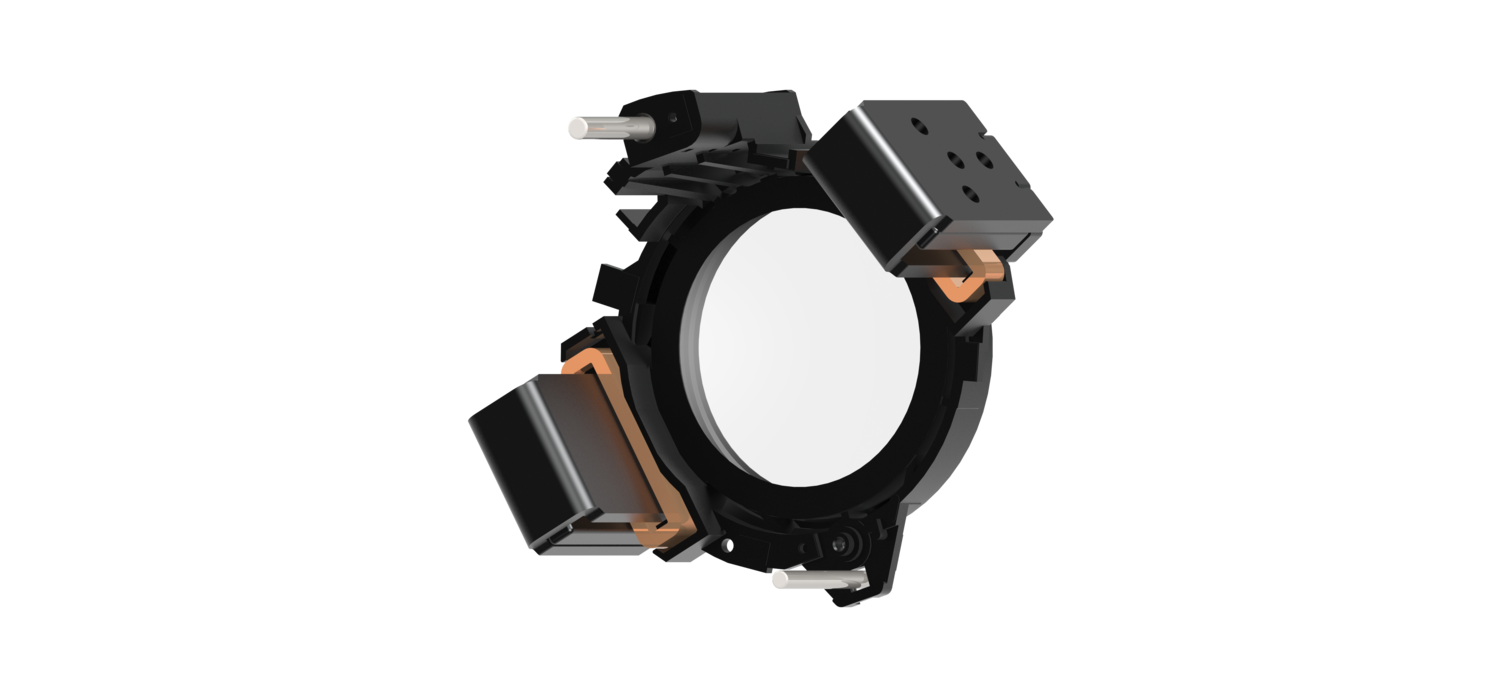
The HLA focusing mechanism
Lens focusing noise is only really an issue if you are shooting video in a library. The real question is how this HLA system stacks up as far as grabbing focus quickly and giving you sharp images. I tested this lens both wide open and at tighter apertures with strobes, LED, and in an ultra-low light situation lit with just candles. It was able to handle every scenario. Below are some unedited images that were shot full body, but cropped in on just the face so you can see the focus on the eyes and on the face.
Here are images shot with strobe and apertures f/5.6 to f/11:
Images shot between f/5.6 and f/11
Here are images shot wide open at f/1.4:
Images shot at f/1.4
Here are images shot wide open using just candlelight:
Shot at f/1.4 lit with just candles
Another test I decided to perform was with objects moving fast in front of the subject’s eyes. When I shoot in my rain room in my studio, when raindrops fall in front of a subject’s eyes, it can affect the autofocus. So, I wanted to test the focusing system with someone throwing confetti in front of their face. The eyes stayed in focus the entire time, and the lens did not have to hunt for focus.
Autofocus kept focus on the eye in every shot
Sigma 50mm f/1.4 DG DN Art: Driven Inside
Traditionally Sigma (and other third-party lens manufacturers) use rotational motors of some type, a design that was created and optimized for DSLR lens operation.
You can think of a rotational motor like the drivetrain on a car: it’s easy to speed up a car or slow it down, but changing direction from forward to reverse requires coming to a complete stop and then changing the direction in which the gears are moving.

A linear focusing system is the same as a magnetic levitation train. In it, an electric current pushes a sled suspended by a magnetic current above a rail. The sled current is applied to move, and the sled moves in one direction.
The current is reversed to change the sled’s direction, and the sled is pushed the other way. No moving parts mean no friction to slow down the process and no physical gears to reverse.
The lack of moving parts also results in smaller lens designs because this type of motor is much smaller than a rotational one. It also reduces or eliminates the operational noise.

Until there’s a new Sony lens at this same focal length and aperture equipped with its fastest linear motors, there’s no telling how the Sigma HLA motors perform compared to Sony’s system. Still, currently, it outperforms my test Sony 50mm f/1.4 Planar Zeiss-designed lens.
Optically, the lens is comprised of 14 elements in 11 groups, including one SLD (Super Low Dispersion) and three aspherical lenses. An 11-blade rounded aperture creates an incredibly soft bokeh that’s a hallmark of Sigma’s Art lenses.
The glass has Sigma’s Super Multi-Layer Coating to reduce flaring and ghosting and a front-element coating to reduce fingerprints, grease, and dust contamination.
Design
Make no mistake, the 50mm F1.4 ($779.00 at Amazon) is on the large side for a standard-angle prime lens. It measures 3.9 by 3.4 inches (HD), weighs 1.9 pounds, and uses big 77mm front filters. Utilizing the included petal-style reversible lens extends the height of the lens to about 6.0 inches.
The lens is available for Canon EF, Nikon F, Leica/Panasonic/Sigma L, Sigma SA, Sony A, and Sony E cameras. It’s eligible for the company’s mount conversion service, and its autofocus performance can be tweaked using an optional USB Dock ($43.32 at Amazon) . There’s no optical stabilization—that’s not something you often see outside of zoom lenses and telephoto primes—but Sony shooters can benefit from the in-camera stabilization that Alpha SLRs provide.
Similar Products
There’s a big manual focus ring with a ridged, rubberized grip, and a toggle switch to change between autofocus and manual focus operation. Autofocus is a big factor separating this lens from the manual focus-only Zeiss Otus ($3,316.32 at Amazon) . The Sigma’s focus throw is a lot shorter, with 10 feet being the last marked distance before infinity, and its depth of field scale only shows marks for f/1.4 and f/16. If you’re a manual focus shooter, the longer focus throw of the Otus and superior depth of field scale are points in its favor.
The Sigma can focus as near as 15.7 inches, which is just a little bit closer than most 50mm f/1.4 designs; the aforementioned Nikkor and the Sony Carl Zeiss Planar T* 50mm f/1.4 ($1,498.00 at Amazon) can only lock on at 18 inches and longer distances. That gives the Sigma a slightly higher magnification ratio (1:5.6), but it by no means qualifies as a macro lens.
Who’s It For?
Reading the spec sheet, you’d think the Sigma 50mm f/1.4 DG HSM Art is just another wide-aperture . To a certain extent, that’s true, but it’s also one of the finest full-frame fast fifties ever designed. Ideal as walkaround prime—if you can excuse the size—it can capture everything from landscapes, to portraits, to product shots.
It’s big, heavy, and expensive, which means it might not appeal to beginners or even enthusiasts who are more interested in portability and «good enough» image quality. But for users who want nothing but the best, it’s basically going to come down between this lens and the $4,000 Zeiss Otus 55mm f/1.4.
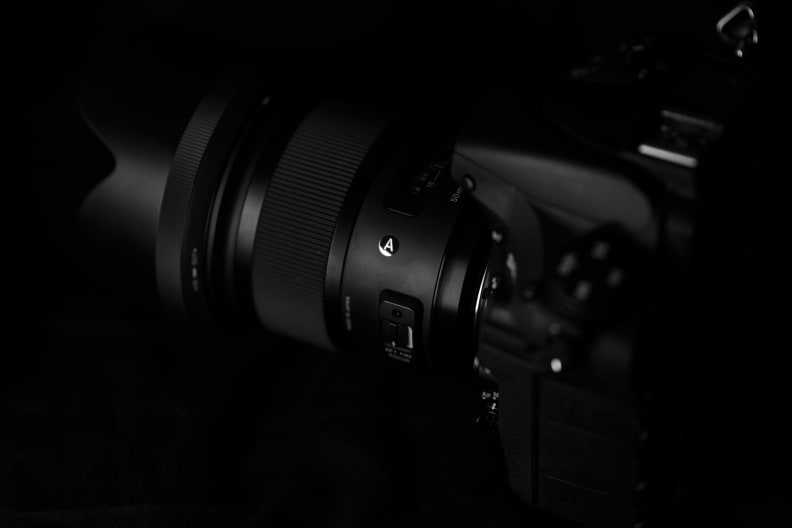 Credit:
Credit:
Reviewed.com / Chris Thomas
The side of the 50mm f/1.4 DG HSM A features a badge denoting its specification.
That puts the Sigma in an interesting spot. On the one hand, it benefits from the Otus’s ridiculously high price and lack of autofocus. On the other hand, if you’re the kind of shooter who just wants the best image quality in the world, maybe you don’t care about price or autofocus. Still, we think there are plenty of enthusiasts who will find this lens fits just right.
Sigma 50mm f/1.4 DG DN Art: Operation
My first thoughts when using high-end third-party lenses usually are, “that’s good,” but my first thoughts with the Sigma 50mm f/1.4 were instead, “that’s great.”
Focus speed is impressive, as is focus accuracy. While photographing at a local lake, the Sigma 50mm f/1.4 on the Sony a7R V could detect and track tiny bird eyes at least 20 meters away.
Only a few people buy a 50mm lens for wildlife photography. Still, the fact that the lens can lock onto such a tiny reference point at a distance and maintain it shows how the new focusing system in the Sigma 50mm f/1.4 DG DN works in tandem with Sony’s subject-detection AF system.

 Eye detection on birds with the Sony a7R V and the Sigma 50mm f/1.4 DG DN is just as good as with native glass.
Eye detection on birds with the Sony a7R V and the Sigma 50mm f/1.4 DG DN is just as good as with native glass.
For human subjects at a standard portrait distance, the Sigma 50mm f/1.4 DG DN locks onto eyes with the same agility and tenacity as any lens I’ve used. Like with Sony’s first-party lenses, the new Sigma lens performs fast enough to nail shots repeatedly. Typically, third-party lenses can lock onto whatever subject the attached camera is designed to detect but lose focus if the subjects move quickly.
An important thing to remember with a super-wide aperture lens is how narrow your field of view is. With the fast focus of the Sigma lens, I found myself shooting wide open quite a bit, where sometimes even minor movements of myself or my subject while shooting a burst of images could move the focus point. The TLDR here is that an f/1.4 lens needs more care when selecting shutter speeds than other apertures.
Sigma 50mm f/1.4 DG DN Art An Excellent Piece Of Glass
I don’t like to evaluate lenses strictly on price, as customers have different thresholds for what is expensive. Still, Sigma has always struck a nice balance between price and quality.
The Sigma 50mm f/1.4 DG DN Art is no exception. With a price of $850, the Sigma 50mm f/1.4 is around half the price of the current Sony 50mm ZA and more than $1000 cheaper than the Sony 50mm F1.2 GM.
 2023 Henry Schloss
2023 Henry Schloss
This is a fantastic value considering the performance improvements brought with the HLA motors in this lens. While I’ll need to evaluate this lens fully when production models are available, even this preproduction model of the Sigma f/1.4 DG DN well exceeded my expectations.
The 15 frames per second capture rate limitation may lead some to select the Sony 50mm f/1.2 GM over the Sigma f/1.4. DG DN Art, but for most target customers, this is a limitation without much implication.
It will be hard to find a reason not to buy the Sigma 50mm f/1.4 DG DN Art lens when it becomes available. This Sigma lens is likely to become one of the lenses against which other 50mm lenses are judged.
Are There Alternatives?
There are so many alternatives in the 50mm focal length for the Sony E-Mount. Adorama has more than five dozen lenses in the focal length for this platform, though this includes many manual focus lenses, kit-quality lenses, and several pieces of glass much more expensive than this.
The closest lenses in this category is the nearly $2,000 Sony 50mm f/1.2 GM and the $1,500 Sony Zeiss 50mm f/1.4 lens. These are both more expensive and, as mentioned, aren’t as performant across the board.
Should You Buy It?
Yes. Until we see a new Sony-made 50mm f/1.4 G or GM lens, there isn’t anything in the class that’s as fast, accurate, and affordable as the Sigma 50mm f/1.4 DG DN Art.
Sigma 50mm F1.4 DG DN Art Lens Image Quality:
As for image quality, the 50mm f1.4 DG DN Art lives up to its Art Series designation in every regard. As I said, not only was Sigma able to shrink this lens down when compared to the older HSM version, image quality is actually improved as well.

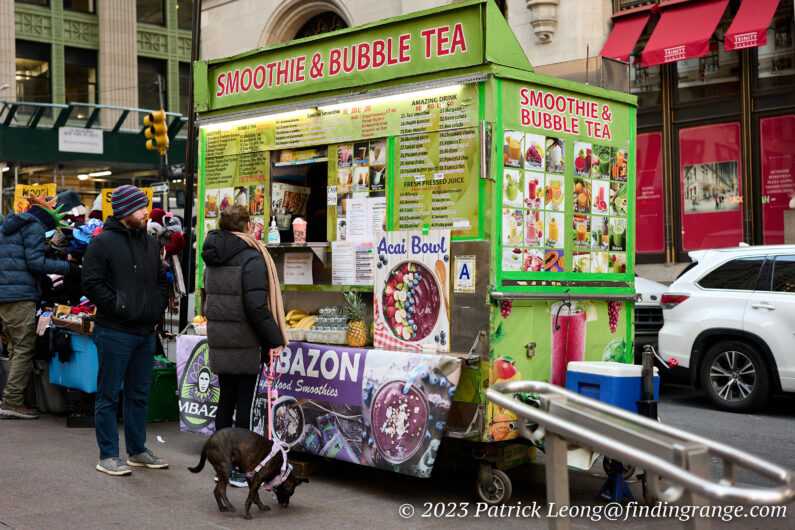
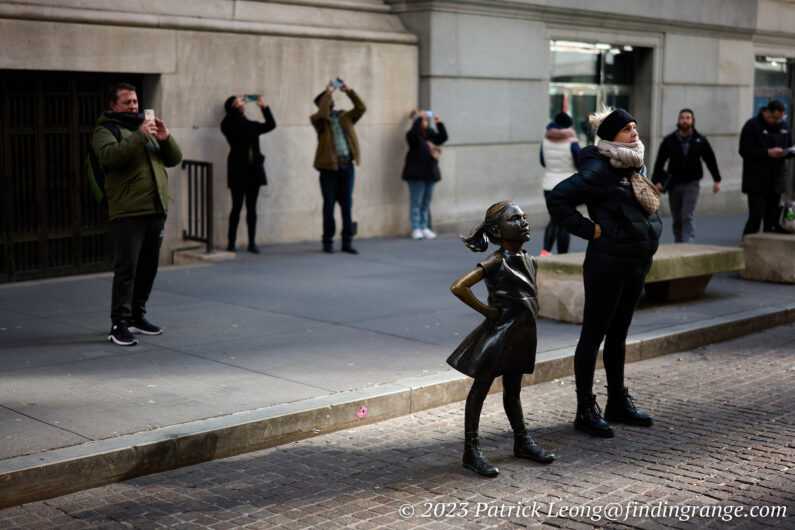
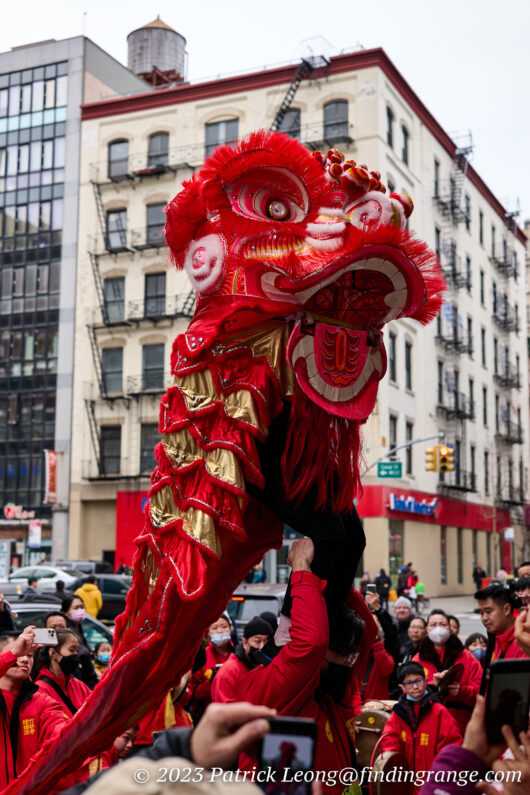
Let’s take a look at sharpness first, which is downright fantastic. At f1.4 sharpness is everything you would expect from a top tier lens with even edges, and corners performing quite well. As you stop down, sharpness overall improves a bit but it’s not something drastic that you’ll notice any difference in the real world. The 50mm f1.4 DG DN Art is already so good at wider apertures. I can tell you what I found to be the best f stop area to be around for optimal sharpness but the truth is, you can use this lens throughout the aperture range, and get incredible results.
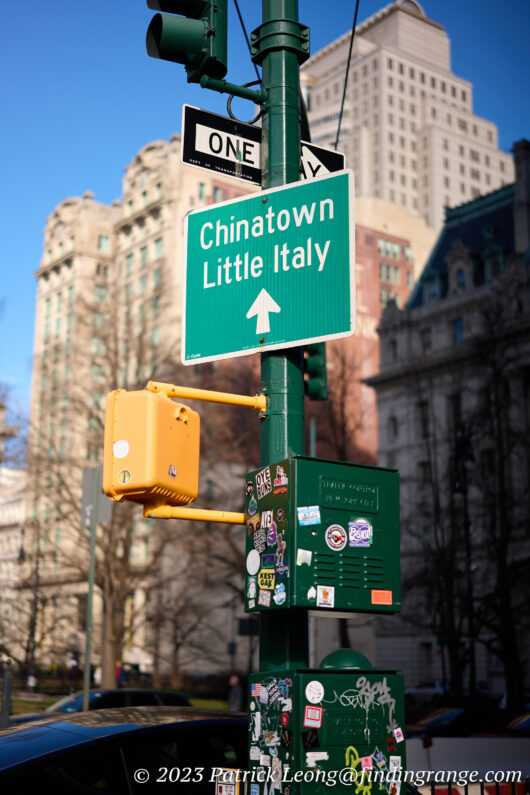
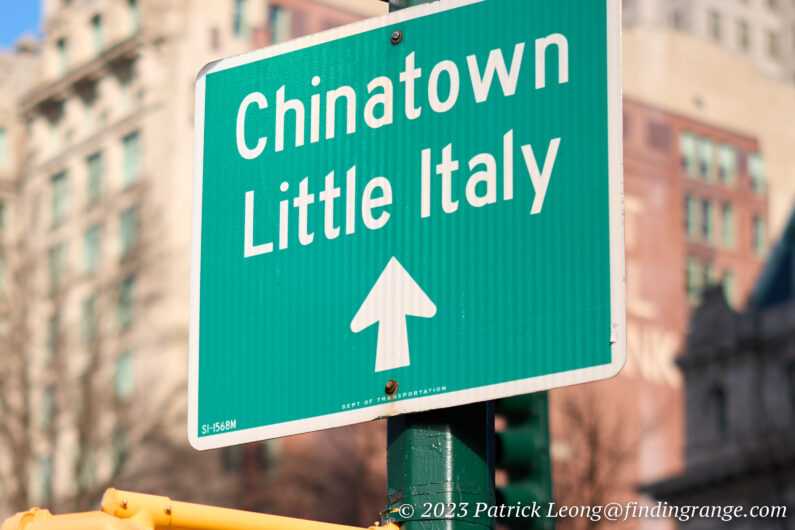
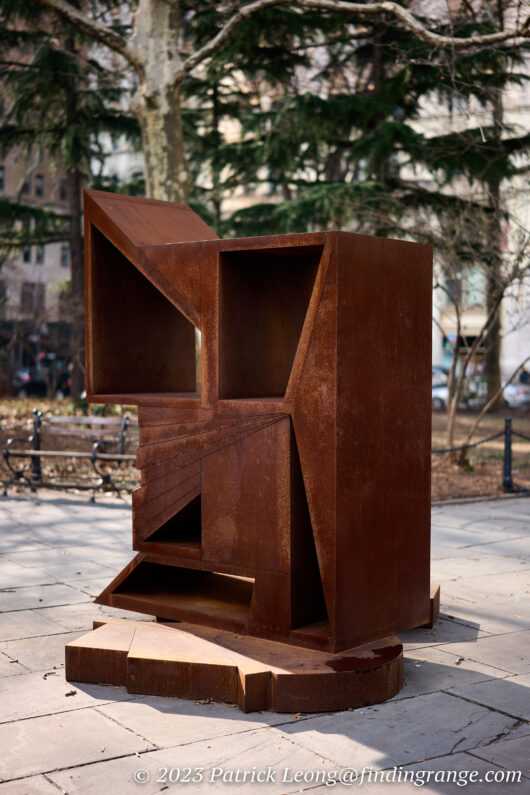
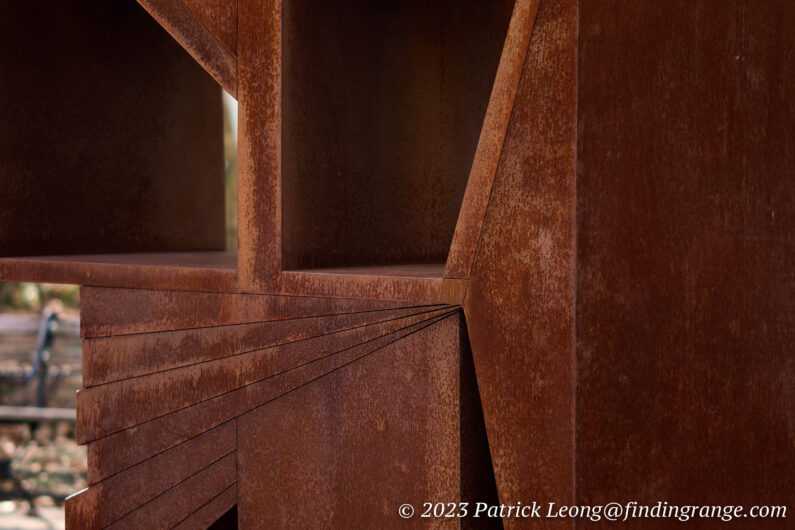
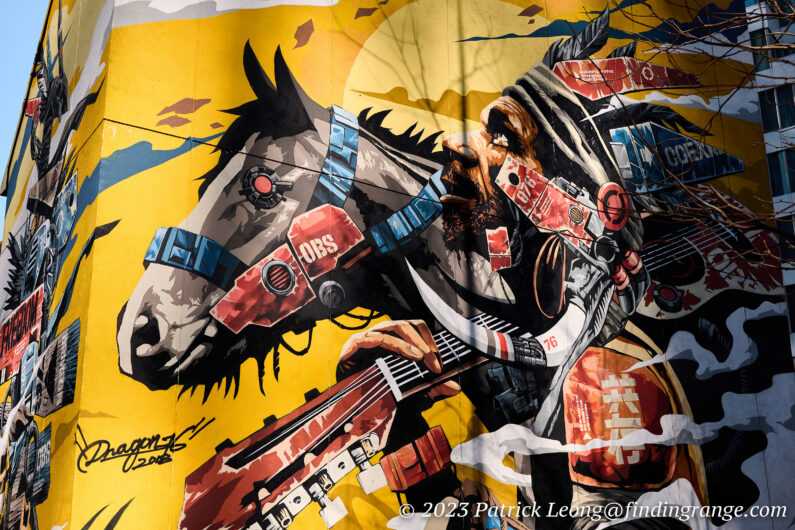
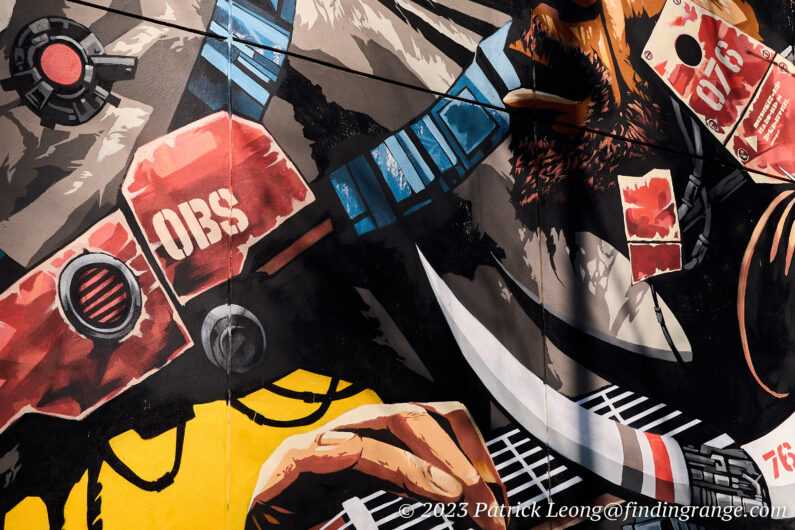
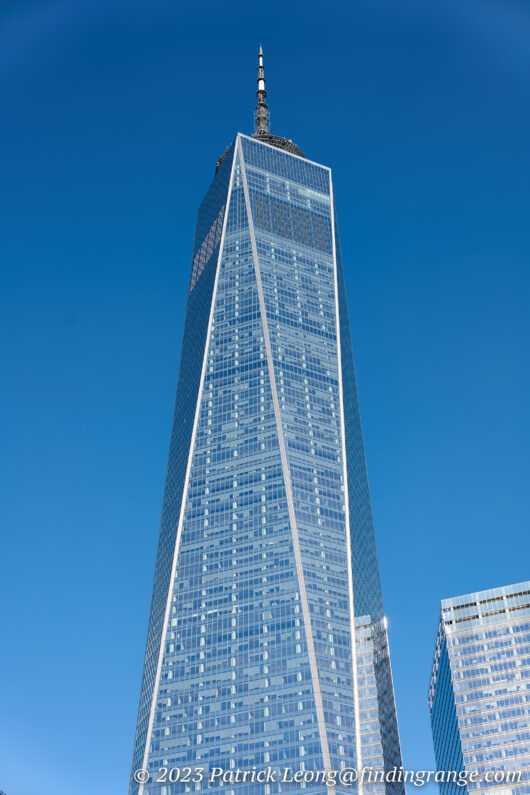

In addition, everything else about the 50mm f1.4 DG DN Art is equally as good, in my opinion. Color rendering and contrast are excellent. Subjects have a nice depth to them, which is a trait we see in lot of high quality lenses. I also did not experience any issues with unusual lens flare. In other words, I found it to be highly flare-resistant. There is some vignetting at f1.4, which isn’t out of the ordinary. Stopping down by one stop to just f2 reduces it significantly. As you continue to stop down, whatever slight vignetting is left disappears. Overall, this is one seriously impressive piece of glass here.
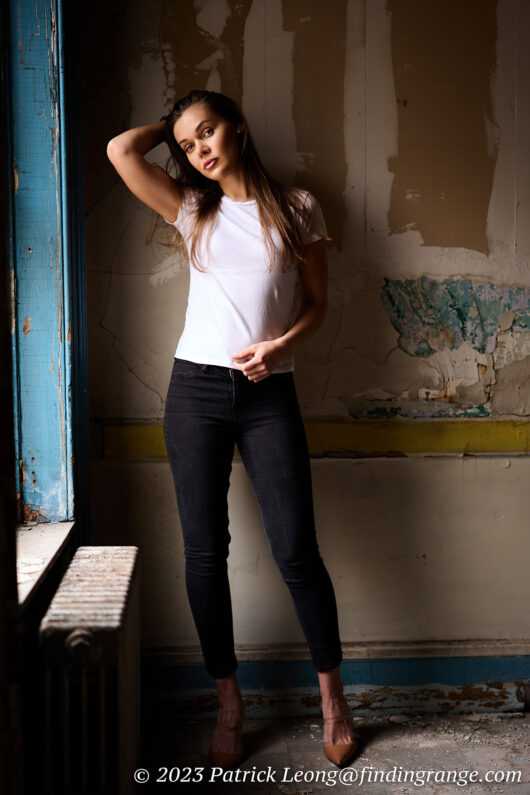


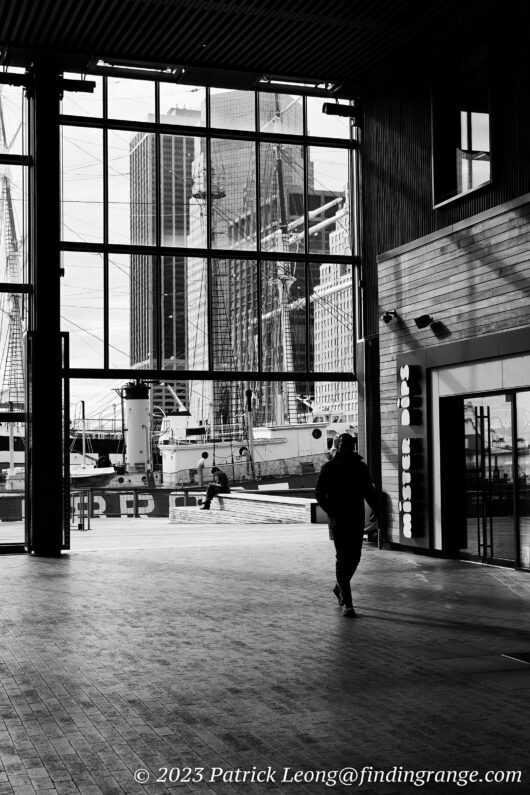
What is the Sigma 50mm f/1.4 DG DN Art lens?
The Art series represents Sigma’s high-end glass, designed to make the most of high-resolution bodies like the Sony A1. This isn’t simply an older DSLR lens with a mirrorless mount bolted onto it. Sigma claims it has totally redesigned the optical formula in order to take advantage of the short flange distance that comes with mirrorless cameras.
The lens contains 14 total elements in 11 groups. That includes three aspherical elements and one super-low dispersion piece of glass. That’s quite a bit of aspherical glass for a sub-$1,000 lens. Sigma says it’s all an effort to correct common issues that come from fast lenses. Those issues include field curvature and sagittal coma flare, which causes out of focus areas to look unnatural, especially when shooting small light sources wide open.
Sigma 50mm F1.4 DG DN Art Lens Review L Mount:
The 50mm is, in my opinion, one of the most important, and useful focal lengths, which is also why it is my favorite to use. For my type of work, which is mainly boudoir, and street fashion, this focal length is attached to my camera body nearly 100% of the time. A 50mm with a wide open aperture of f1.4 is my number one choice when it comes to 50mm’s because I find it offers a nice balance when factor in image quality, size, and of course, light gathering capabilities. I know many who feel the same, which is why I feel Sigma’s newly announced lens, the 50mm f1.4 DG DN Art is so important, especially for the L Mount Alliance. Thanks to Sigma, I was able to get a pre-release sample to test, and here are my thoughts on this new lens.
I get a small commission from purchases made through the links mentioned in this review, which in turn, helps support this site but it will not cost you anything extra. Thank you!
Sigma 50mm f/1.4 DG DN Art: Speed vs. Sony Glass
When shooting with the Sigma 50mm f/1.4 on the Sony a1, the maximum frame rate of the lens caps out at 15fps versus the 30fps of native glass. This is due, Sony has told me in the past, to the fact that its engineers know how to maximize the communication between the lenses and the camera’s focusing system to maximize the performance of a lens’ operation.

This makes logical sense, though an alternative possibility is that Sony limits the speed of third-party glass to 15fps to reduce competition.
This lens will operate at full speed of most Sony camera AF systems but at half speed on the Sony A1 and a9/a9 II. Future Sony cameras with high-speed capture rates will likely have the same limitation.
This capture rate limitation will not impact the typical portrait shooter, but it is something to keep in mind if the lens is used for sports or high-action photography.
Conclusion
Sigma’s rapid ascent in the lens market over the past couple of years has been spectacular to behold. While the company has always made solid alternatives to first-party options from Canon and Nikon, quality control and compatibility issues have dogged the company for years. Still, most shooters knew that—so long as you got a good copy—Sigma’s best lenses could compete with name-brand gear.
But the «Art» lenses have set Sigma apart. Today, it’s seen as a company that’s putting quality before quantity—sometimes even more so than their larger rivals. And lenses like the 50mm f/1.4 DG HSM Art show that Sigma’s ambitions are sky-high. This company doesn’t just want to make great lenses, it wants to make the best lenses in the world.
 Credit:
Credit:
Reviewed.com / Kyle Looney
EXIF: 50mm, ISO 100, 1/6400, f/1.4
The 50mm f/1.4 DG HSM Art doesn’t just compete with the Nikon 50mm f/1.4G or the Canon EF 50mm f/1.4—it blows them out of the water. Sure, it’s bigger and more expensive, but it easily out-resolves both rivals, with minimal distortion and optical aberrations throughout the frame. And even though $950 is a lot to shell out for a 50mm f/1.4, it competes on a nearly even footing with the $4,000 manual-focus Zeiss Otus 50mm f/1.4—a boutique lens if there ever was one.
Whether it’s worth it to you will depend entirely on your personal goals. While you have to respect what Sigma has accomplished, this lens probably provides more raw performance than most people really need from a 50mm f/1.4. Would most beginners and enthusiasts be just as happy with the $329 Canon EF 50mm f/1.4 USM or the $419 Nikon 50mm f/1.4G? Almost certainly.
Still, if you just want the best 50mm lens you can get (with autofocus), this is your lens. And to Sigma, a lens like this isn’t just about the money or the units sold. It’s about prestige. It’s about changing the perception of an entire brand. To Sigma, this lens is priceless.
When evaluating any lens, we focus on four key areas: sharpness, distortion, chromatic aberration, and bokeh. A perfect lens would render the finest details accurately, wouldn’t distort straight lines or produce ugly fringing around high-contrast subjects, and would create smooth out-of-focus areas.
In our lab tests, the Sigma 50mm f/1.4 DG HSM Art essentially pitched a perfect game. It’s sharp at nearly every aperture across the entire frame and, when mounted on the 36.3-megapixel Nikon D810 or the 50.6-megapixel Canon EOS 5DS, it out-resolved every other lens we’ve tested to date. It also virtually free of visible chromatic aberration and produces very little distortion. While it’s a touch soft in the corners at f/1.4, that’s just about the only negative we can come up with.
Look and Feel
A few years ago, the Japanese camera industry was nearly upended by the massive tsunami that struck the homeland. Sigma’s CEO, Kazuto Yamaki, had a choice to make: move production offshore and maintain a focus on quantity over quality, or keep production in Japan and try to produce more high-end lenses to make up the difference.
{{brightcove ‘3797455441001’}}
As soon as you pick up the 50mm f/1.4 Art lens, it’s clear which direction the company went—and not just because of the “Made in Japan” label. This is a lens that’s been expertly crafted, on par with the very best that Canon and Nikon has to offer. There’s absolutely zero flex and a significant heft that lends an immediate sense of quality. Every switch and dial provides just the right amount of feedback, as everything is tuned to be fairly stiff and communicative right out of the box.
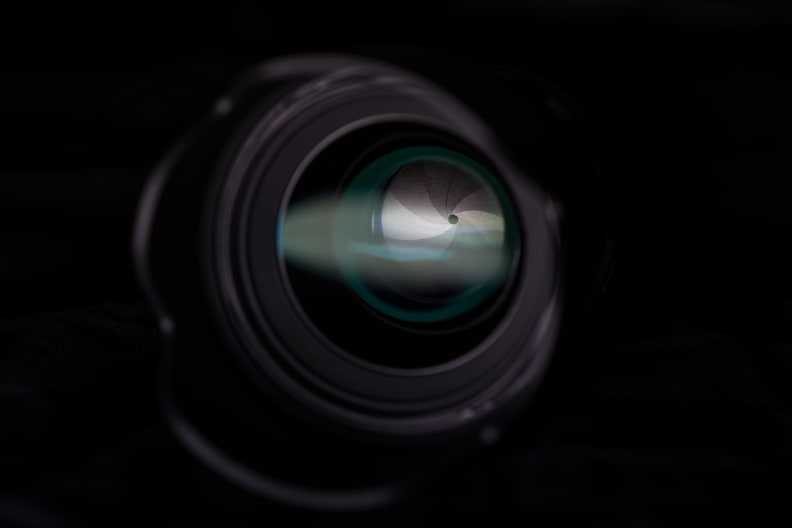 Credit:
Credit:
Reviewed.com / Chris Thomas
The aperture iris is as well-designed as it looks.
While that’s good to see in a lens that’ll cost you nearly a grand, the extra size and weight is the lens’s biggest problem. At 3.9 inches long and nearly two pounds, it’s about twice as long and nearly three times as heavy as the equivalent Canon and Nikon lenses. It’s still not anywhere near as large or heavy as your average pro zoom, but if you’re used to owning a 50mm lens you can easily carry in a jacket pocket, the Sigma will be a jarring change of pace.
{{ photo_gallery «tour» }}
Заключение
Последние наработки в линейке Art от Sigma, такие как 18-35mm F1.8 DC HSM и 35mm F1.4 DG HSM, весьма впечатляют. Sigma 50mm F1.4 DG HSM выступает в том же ключе, практически во всем превосходя своих одноклассников. И если старая версия 50мм объектива от Sigma была просто лучше аналогов, то Sigma 50mm F1.4 DGHSM Art задает новые стандарты в своем классе. Объектив идеально подходит для работы с топовыми полнокадровыми камерами, такими, как Nikon D800 и Canon EOS 5D Mark III.
Фактически, 50мм от Sigma — один из лучших объективов, которые мы когда-либо тестировали. Он очень резок даже на открытой диафрагме, без малейших признаков наличия аберраций, которые свойственны линзам этого типа. Если немного прикрыть диафрагму, Sigma раскрывается во всей своей красе — на 20 Мпикс Canon EOS 6D изображение резкое по всей площади кадра на диафрагмах F2.8-F11. Очевидно, что при наращивании разрешения Sigma продолжит выдавать стабильно хороший результат, и объектив спокойно сможет разрешить 36-Мпиксельный сенсор D800, когда появится версия с байонетом Nikon.
Хроматические аберрации чрезвычайно малы — иногда в зоне нерезкости видны фиолетовые и зеленые ореолы вокруг высококонтрастных областей, но они очень незначительны. Дисторсия практически отсутствует, а виньетирование присутствует в количествах, сравнительно малых для объектива такого класса (всего 1.5 ступени в углах на полнокадровой матрице). Объектив чрезвычайно устойчив к контровому свету и дает очень красивый рисунок в зоне нерезкости. В целом, при изучении сотен отснятых кадров, сложно найти недостатки, к которым можно было бы придраться.
Работать с новым 50 мм фиксом от Sigma тоже одно удовольствие. Автофокус очень быстрый, тихий и точный на версии для байонета Canon, которая была у нас на тесте. Кольцо фокусировки широкое, вращается плавно и имеет достаточно большой ход для удобства ручной фокусировки. Максимальной точности автофокус достигает при использовании центральной точки фокусировки, об этом стоит помнить при съемке. Качество сборки также не оставляет никаких вопросов (разве что вам жизненно необходима влагозащищенность), а также присутствуют небольшие приятные мелочи вроде удобного переключателя фокусировки и насечек для лучшего хвата на нижней части корпуса.
Расплачиваться за всё это удобство приходится размером и весом. Производитель достиг столь превосходных оптических свойств за счет использования ретрофокальной компоновки, типичной для 35мм фиксов, при этом отойдя от классической схемы «Планар». Из-за этого объектив более чем в два раза крупнее и в три раза тяжелее своих одноклассников из систем Nikon и Canon. Столь массивный объектив отличается и внушительной ценой — рекомендованная производителем цена $950 / £850 / €1000 несильно отличается от ценообразования на топовые Nikon AF-S Nikkor 58mm F1.4G, Canon EF 50mm F1.2L USM, или Sony CarlZeiss Planar T* 50mm F1.4 ZA SSM.
Весьма интересно сравнить 50мм от Sigma с Nikon AF-S Nikkor 58mm F1.4G, представленном в 2013 году. Складывается впечатление, что Nikon пожертвовал резкостью картинки в пользу рисунка и боке — Nikkor 58mm F1.4G не настолько резок, как Sigma, но очень красиво размывает фон. Для портретной и свадебной фотографии этот Nikkor — отличный выбор, но мы уверены, что найдется множество фотографов, которые предпочтут Sigma.
Если Вам понравился этот материал, то мы будем рады, если Вы поделитесь им со своими друзьями в социальной сети:
Фотожурнал / Технические обзоры / Обзор объектива Sigma 50mm F1.4 DGHSM Art
Тэги к статье: фототехника, sigma, объектив
Дата: 2015-01-05 | Просмотров: 10190
|
|
Тематические уроки по фотографии:
- Снимаем видеообзор на продукт заказчика. Бесплатный урок
- Портрет частного заказчика. Тонкости обработки
- Бэкстейдж. Видеосъемка и монтаж для начинающих
- Делай сам: 3 суперспособности фотографа
- Приручи музу: как вырваться из шаблонных съемок



























